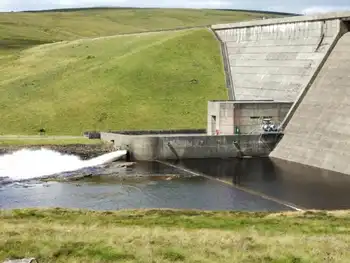Duke criticized for drought protocol
By Knight Ridder Tribune
Electrical Testing & Commissioning of Power Systems
Our customized live online or in‑person group training can be delivered to your staff at your location.

- Live Online
- 12 hours Instructor-led
- Group Training Available
The first, naturally, is a shortage of rainfall. The second, she said, is the system in place to prevent such problems did not work. "The Low Inflow Protocol didn't really work," said Lisenby as part of her public presentation "How Low Can We Go? Enduring the Drought of 2007-2008" at a recent CovekeepersÂ’ meeting at Red Fez Club in Steele Creek.
Duke Energy introduced the system, known as the Low Inflow Protocol, of checks and responses for water storage throughout the Catawba basin as part of its federal hydroelectric relicensing effort for 2008. The system was used voluntarily in 2007 by municipalities drawing Catawba water, increasing from a drought watch to mandatory- use restrictions by fall.
Now, looking back on the first trial for the LIP system, Lisenby says it needs to be reevaluated as dry weather looms in 2008.
"That minimum lake level for Lake Wylie does not work," Lisenby said. "Even if it did work, it was too little, too late."
The LIP system sets minimum lake levels for each of the 11 reservoirs along the Catawba, including Lake Wylie. As Lake Wylie dipped within two inches of its minimum level in the fall, the local boating economy and lake structures were damaged, Lisenby said. Access areas were closed and the impact on wildlife may not be fully known until the drought ends, she added.
Duke, however, considers the LIP model a success in that even record high temperatures in the summer and record low rainfall for several months could not push lakes below minimum levels, which are set based on the highest water intake.
"Clearly, the Low Inflow Protocol has worked and continues to be effective as water remains available for vital public safety and health needs," said Marilyn Lineberger, Duke spokeswoman.
Lisenby presented statistics showing seven basin water users actually increased overall water consumption in May through September 2007 compared to the same time in 2006. "We used more water in 2007 with mandatory restrictions on water use," she said.
Charlotte Mecklenburg Utilities showed an increase of more than 700 million gallons take out in May and June 2007 during the drought-watch stage.
During Stage 1 restrictions in July, use was up 141 million gallons compared to July 2006. By Stage 2 restrictions in August, water use was up 724 million gallons from August 2006.
By September 2007, which introduced Stage 3 mandatory restrictions, use increased 235 million gallons from the previous year.
Lisenby added factors including area growth could have contributed to the increases. Duke did not want to discuss data from other utilities. However, Lineberger said, by working with 24 water providers, water use in 2007 was lower than it would have been without the LIP system.
"By following the Low Inflow Protocol, individuals, businesses, cities and towns have conserved water and bought more time until normal rainfall patterns can return to our region," she said. Lisenby also said the LIP system does not provide enough in terms of limiting water use by the region's largest water user - Duke.
The 18 power plants along the Catawba use significantly more water than residential or commercial customers, with some plants requiring up to 30 gallons of cooling water to produce one kilowatt hour of electricity. Recent studies from Georgia show similar power plants requiring homes, on average, to use 27,000 gallons of water a month just in electricity production.
"Duke reduced its hydroelectric generation by more than 60 percent in order to save water during this period of drought," Lineberger said. "It's important to note that the basin supports power plants that generate vital electricity for a million or more customers."
Lisenby and Lineberger agree power is necessary, but Lisenby says more can be done to recycle water used to cool power plants. The two also agree that regardless of how well the LIP performs, the continuing drought is the biggest factor for low water levels.
"The biggest reason we dropped so low is the weather," Lisenby said. "We just didn't have the rainfall."
Duke will wait until the drought ends before deciding whether to make changes to the LIP system, which could require a federal application if changes are needed with its hydroelectric license.
"Once the drought is over, lessons learned will be reviewed and recommendations made to Duke Energy for future improvements in the interest of continuously improving the Low Inflow Protocol," Lineberger said.











